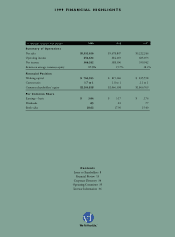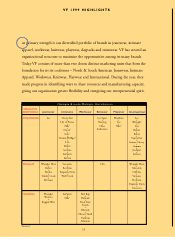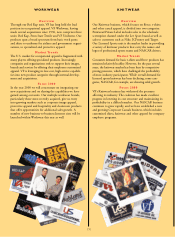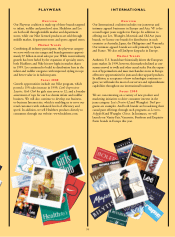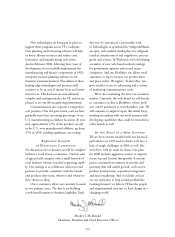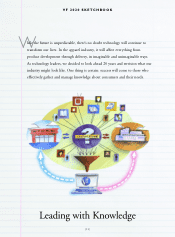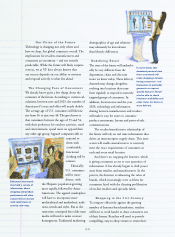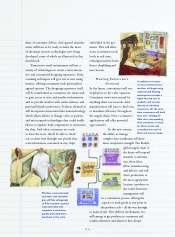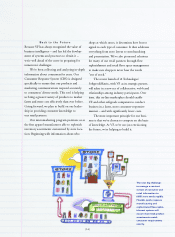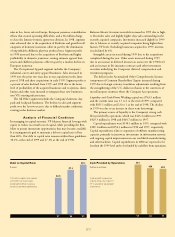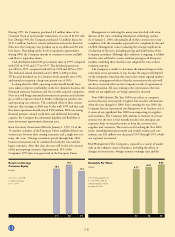North Face 1999 Annual Report Download - page 10
Download and view the complete annual report
Please find page 10 of the 1999 North Face annual report below. You can navigate through the pages in the report by either clicking on the pages listed below, or by using the keyword search tool below to find specific information within the annual report.
M
TO OUR SHAREHOLDERS
arking our Company’s 100th anniversary, 1999 sales
reached an all-time high, our margins remained
at healthy levels, our cash flow was strong and we
successfully navigated our way through several
difficult operational and market issues. And 1999
marked the 27th consecutive year of increased
dividend payments to shareholders. While we
didn’t achieve the record earnings we had hoped
for, we made great progress in a number of areas.
Our Mass Market jeans business, which
includes the Wrangler, Riders, Rustler, Brittania
and Timber Creek brands, had its best year ever.
Our domestic intimate apparel business also
achieved record results, primarily due to strong
performance in our Vassarette and Private Brands
businesses. During the year we signed an agree-
ment with Tommy Hilfiger Licensing, Inc. to
produce and market a complete line of intimate
apparel, which will be launched this summer.
This relationship was recently expanded when
our Jantzen unit agreed to launch a Tommy
Hilfiger swimwear line. Playwear also had an
excellent year, with Healthtex, Lee and our
Nike licensed businesses each posting higher
sales in 1999. Workwear sales jumped over
30%, as we added three occupational apparel
companies – Horace Small, Todd Uniform
and Fibrotek – to our portfolio in 1999.
We also expanded our presence in Latin
America, and acquired UFO, Argentina’s
leading jeans brand. JanSport also reported
record sales in 1999.
Sales rose to a record $5,552 mil-
lion in 1999, due primarily to our
Workwear acquisitions and the addi-
tion of formerly licensed businesses in
Latin America, Turkey and Japan.
However, following three years of
double-digit increases, earnings
dipped 4%, to $3.04 per share.
The earnings decline reflects several factors.
In the second quarter, difficulties in consolidat-
ing operations at two distribution centers created
shipping problems and generated excess costs.
These issues have largely been resolved.
Two significant market issues also had an
impact on earnings. Weak sales in mid-tier
department stores, particularly in the jeans cate-
gory, affected our Lee brand sales. Due to strong,
consumer-driven marketing and new product
programs, Lee outperformed many brands in this
retail channel, yet sales volume in 1999 was
below anticipated levels. In 2000, we will work
with our retail partners to increase visibility and
excitement within the jeans category. An array of
advertising and product introductions should
lead to improved results for Lee in 2000.
Unlike in the U.S. where demand for overall
jeans continues to grow, the European jeans mar-
ket showed a marked decline in 1999, adversely
affecting sales of our Lee and Wrangler brands
in such key countries as Germany and the U.K.
Traditionally, the European jeanswear market
has been more volatile, fragmented and fashion-
driven than in the U.S. Because it is difficult to
pinpoint the cause of the current downturn in
consumer demand for jeans, it is even harder to
predict the timing for a market recovery. We are,
however, encouraged by the response to new
programs introduced by both Lee and Wrangler.
In particular, we see great potential in European
hypermarkets for Hero by Wrangler, the first major
U.S. brand to be launched into this growing
retail channel.
Investor concern over these issues, and a
contraction in the prices of apparel stocks gener-
ally, contributed to a sharp decline in VF’s share
price during 1999. While the overall economy
remained strong and the major stock market
indices reached new highs, shares of many apparel
companies performed poorly. For example, the
S&P SuperCap Textile Index declined 23% in
1999, compared to an increase of 25% in the
[8]


